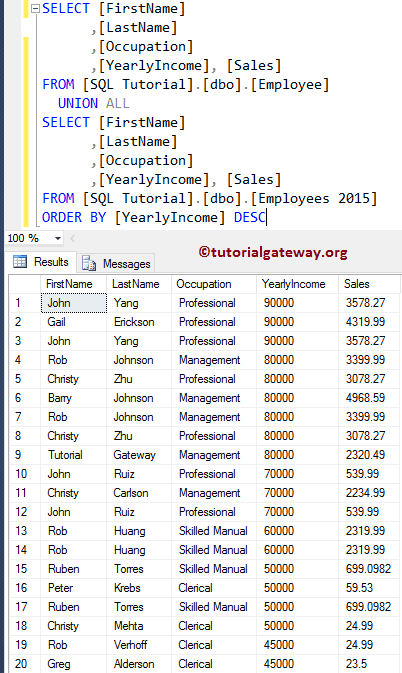The SQL Server UNION ALL is used to combine two or more SELECT statements and returns a single result set. The SQL Union ALL will select all the records (including duplicate records) from all queries, and the syntax behind it is
SELECT Column1, Column2 ......., ColumnN FROM Table1 UNION ALL SELECT Column1, Column2 ......., ColumnN FROM Table2
The basic rules to use this SQL Server Union ALL are:
- The number of columns and their order must be the same in all the queries.
- The column data types should be compatible with each other.
We use two tables for this SQL Server Union All operator Query demonstration. They are Employ and Employees 2015 present in our Database. The Employ table has ten records.
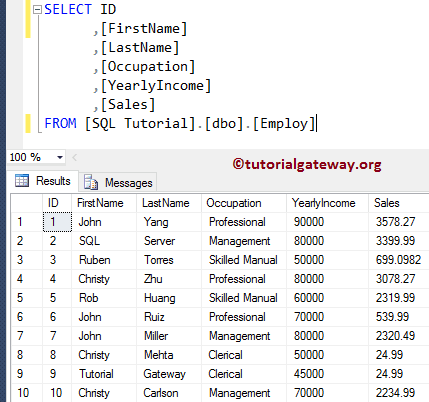
And [Employees 2015] table has six records. Notice that there are only two distinct records; the remaining are identical.
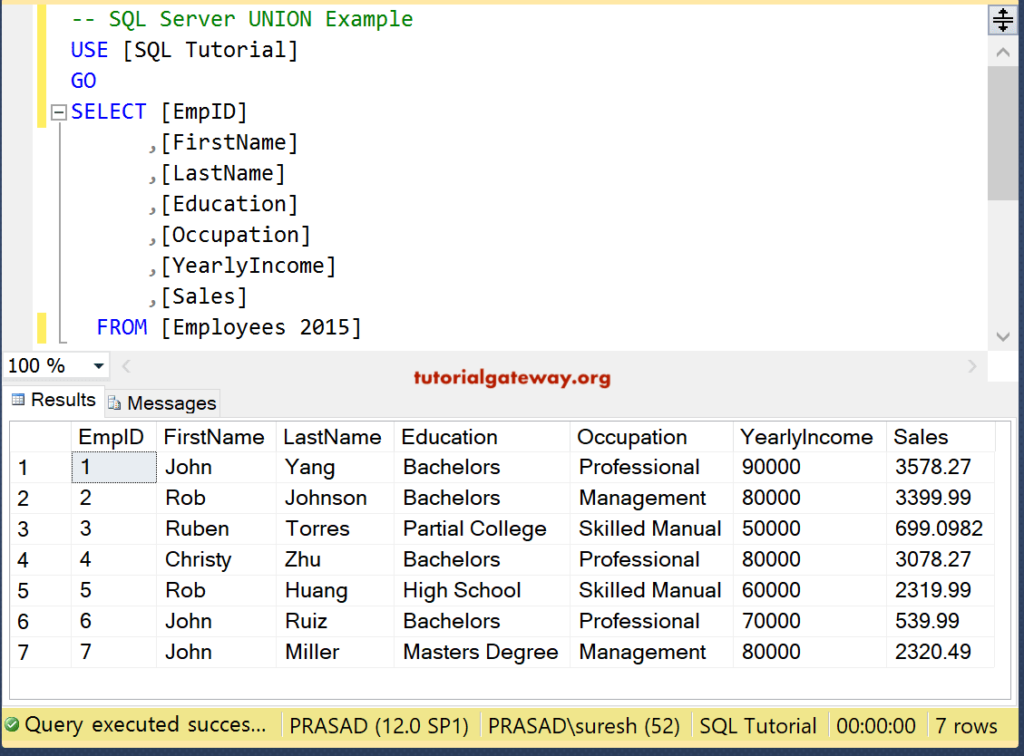
SQL Server Union All example
The following query will return all the records (including duplicate records) from the Employ table and Employees 2015 table and display the result.
SELECT [ID]
,[FirstName]
,[LastName]
,[Occupation]
,[YearlyIncome]
,[Sales]
FROM [Employ]
UNION ALL
SELECT [ID]
,[FirstName]
,[LastName]
,[Occupation]
,[YearlyIncome]
,[Sales]
FROM [Employees 2015]
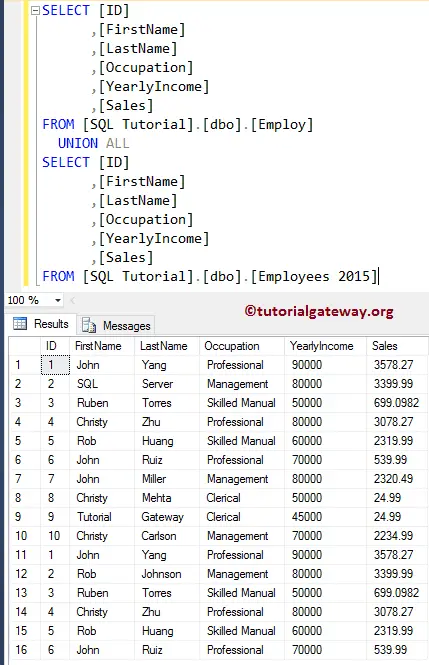
SQL Server Union All along with Where
How to use the UNION ALL operator along with the where clause and ORDER BY Clause? In this example, we are combining two Select statements:
- The first SQL Server result set – It will select all the records from Employ whose Sales amount is greater than 500
- The second result set – It will select the records from Employees 2015 whose yearly income is greater than or equal to 70000
- and this operator will select all the records (including duplicates) from both the first result set and the second result set.
SELECT [ID]
,[FirstName]
,[LastName]
,[Occupation]
,[YearlyIncome]
,[Sales]
FROM [Employ]
WHERE [Sales] > 500
UNION ALL
SELECT [ID]
,[FirstName]
,[LastName]
,[Occupation]
,[YearlyIncome]
,[Sales]
FROM [Employees 2015]
WHERE [YearlyIncome] >= 70000
ORDER BY [ID]
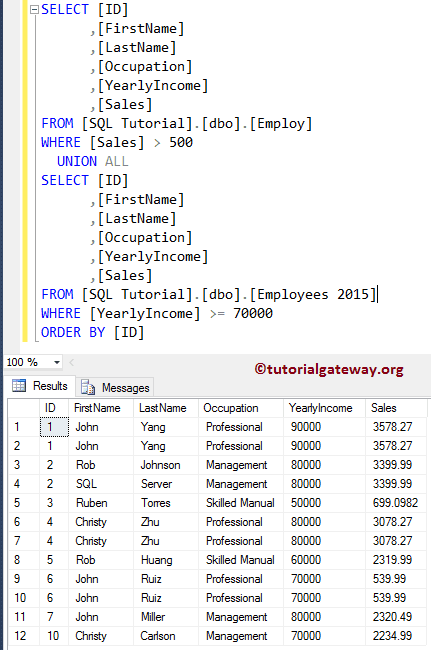
Union All Errors
The following Query will display the common error we face while working with the SQL Server Union All operators. For this, We use two tables (Employee and Employees 2015) available in our Database. The screenshot below shows that the [Employee] table has 7 columns and 14 rows.
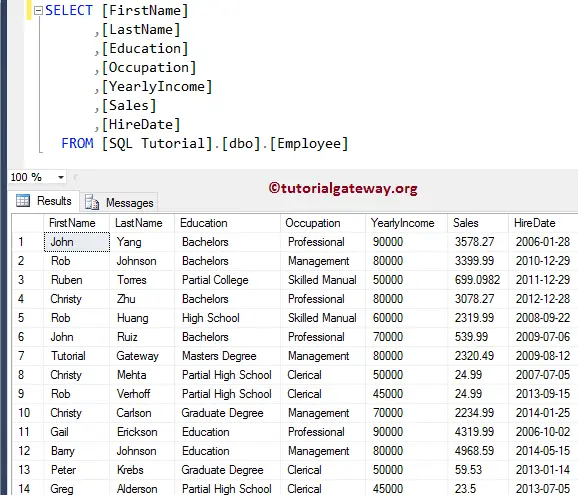
Let us see what happens when we use the Union All operator on the unequal length of columns.
SELECT [FirstName]
,[LastName]
,[Education]
,[Occupation]
,[YearlyIncome]
,[Sales]
,[HireDate]
FROM [Employee]
UNION
SELECT [FirstName]
,[LastName]
,[Occupation]
,[YearlyIncome]
,[Sales]
FROM [Employees 2015]
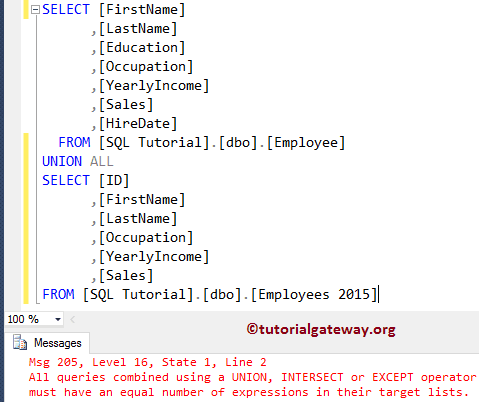
I hope you can read the above message. All queries combined using these operators must have an equal number of expressions in their target lists. Now, let us change the query to select an equal number of columns.
SELECT [FirstName]
,[LastName]
,[Occupation]
,[YearlyIncome], [Sales]
FROM [Employee]
UNION ALL
SELECT [FirstName]
,[LastName]
,[Occupation]
,[YearlyIncome], [Sales]
FROM [Employees 2015]
ORDER BY [YearlyIncome] DESC
The SQL Server Union all query returns 20 records, i.e., 14 records from the Employee table + 6 from the Employees 2015 table.
